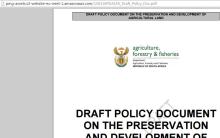Land Library Search
Through our robust search engine, you can search for any item of the over 73,000 highly curated resources in the Land Library.
If you would like to find an overview of what is possible, feel free to peruse the Search Guide.
/ library resources
Showing items 1 through 9 of 83.The push to turn commercial large-scale agricultural into a driving engine of the Zambian economy, in a situation where the protection of access to land is weak, can risk pushing small-holder farmers and peasants off their land and out of production with severe impacts on the people’s right to fo
Secure tenure of farming and forest land is increasingly recognised as an important factor of household food security and nutritional status. This is borne out by a study by the Laotian Land Issues Working Group.
In a long-term project in Kenya, the Swiss-based Research Institute of Organic Agriculture has examined the potential of organic and conventional agriculture regarding soil fertility, the occurrence of pests and diseases, and profitability.
In order to create credibility and sustainability between policies, to avoid political confusion and to reassure “investor confidence”, a clear agri-food policy package needs to be in place.
The preservation, development and sustainable use of agricultural land are of vital importance to ensure longterm food security in South Africa.
The preservation, development and sustainable use of agricultural land are of vital importance to ensure long-term food security.
The Committee was briefed by the Financial and Fiscal Commission (FFC) on the expenditure trends and performance of the Department of Rural Development and Land Reform (DRDLR) and its entities for 2014/15 and the first quarter of the 2015/16 financial year.
Fishery plays a crucial role in poverty and hunger alleviation. It is therefore all the more important to secure the long-term conservation of fish stocks as a natural resource and to ensure fair access to them.
Aquaculture holds a big potential to satisfy the growing demand for aquatic food. Setting out from lessons learnt in past development projects, our author describes what fish farming systems must look like to fit the needs of smallholders and the environment.








